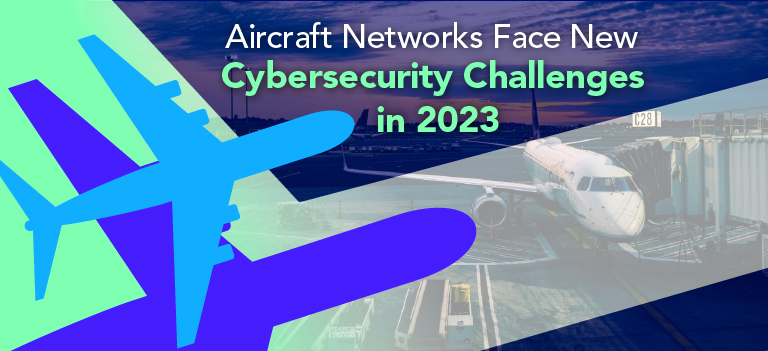Airlines provide crucial international infrastructure, especially considering how much national security relies on aircraft. Cybercriminals know that disrupting this system can lead to big payoffs if the airline networks don’t have optimal protection.
Below, we cover the primary risks cybersecurity professionals should prepare for this year. These threats will likely continue as long as airlines remain vulnerable, highlighting the importance of adequate safety measures.
1. Social Engineering Vulnerabilities
Practiced individuals can dismantle cyber systems, but they find access to sensitive information easier by manipulating humans using them. Social engineering vulnerabilities will remain a top concern for aircraft networks in 2023.
All airline employees should learn about phishing attacks to avoid becoming an unwitting part of these schemes. Cybersecurity professionals can teach people what to avoid and conduct fake phishing scams in coordination with an airline’s IT department to help people recognize potential attacks.
2. Third-Party Contractor Breaches
Airlines can do everything necessary to protect their networks and still face cybersecurity challenges. American Airlines faced a situation like this in late 2021. The company announced a data breach when a cybercriminal infiltrated a third-party data storage network to gain personal information on customers and employees.
Third-party data storage can provide additional security that airlines wouldn’t have if they kept information in airports or office facilities. However, that doesn’t make them infallible. Professional cybersecurity teams should watch for potential issues with data storage companies to add an extra layer of security for airlines and their third-party business partners.
3. Unprotected Networks
Although some airline jobs can’t happen off-site, many new remote positions are becoming popular. Airline employees who log into their email or employee account at home with their unprotected Wi-Fi network pose a potential problem for the airline’s cybersecurity. Professional teams could encourage people to establish VPNs and Two-Factor Authentication (2FA) for any work-related activity that requires logging in.
Additionally, airlines offering commercial flights must protect their in-cabin Wi-Fi. Passengers typically expect free Wi-Fi to elevate their travel experience. Cybercriminals may infiltrate those networks if airlines forget to secure them like airport-based networks.
Commercial airlines can improve their networks by modeling their Wi-Fi security on those sometimes offered on private flights. Private jets have an extensive safety record, with an accident rate in 2010 of 0.07 in over 100,000 flight hours for two-person crews. Individual companies can add Wi-Fi protection measures more easily than commercial airlines, so private planes are more likely to add that cybersecurity layer. However, passengers can also activate a VPN to protect their passwords while browsing the internet on any public or private network.
4. Ransomware
Airlines are incredibly profitable, so cybercriminals often attack them and demand ransom. Ransomware attacks have been 22% of aviation cybersecurity breaches in the last three years due to the potentially high payoff.
They even expect to profit from ransomware attacks on companies supplying airlines with essential machinery. Air Comm Corp. endured a ransomware attack in 2022 because it makes vapor-cycle air conditioners and heaters for planes.
It’s up to cybersecurity professionals to protect aircraft networks and other clients from these attacks with steps like software updates, backing up data frequently and training clients to avoid phishing links.
5. Post-Attack Security Patches
Aircraft networks or cybersecurity clients must have adequate post-attack security patches to prevent attacks from reoccurring. Research shows that people can prevent 60% of data breaches with better patches on known vulnerabilities.
Checking networks for strengths and weaknesses is essential to identifying necessary patches. Post-attack procedures should also reassess a network’s resilience to strengthen its cybersecurity.
6. Cloud Vulnerabilities
There are more ways to access cloud networks than ever before. According to a recent IBM report, cloud vulnerabilities skyrocketed 150% over five years due to standalone tech and ever-broadening computer networks.
Clients should understand how their systems access the cloud and when. They may know to install security measures on computers accessing cloud-based data. However, they may not realize tech like Google Home Minis access calendars and playlists by logging into the user’s cloud account. Devices in airports or airline corporate offices pose a potential cybersecurity challenge.
7. Unprotected Shared Data
Airlines are separate corporations, but they use shared aviation systems to conduct flights and process information. That data may have unprotected vulnerabilities, depending on the measures already taken to protect it. Numerous access points and a lack of adequate security make the data a tempting target for those who intend to weaken the airline infrastructure, nationally or internationally.
Weakened security for shared aviation data is so concerning that the Federal Aviation Administration (FAA) published a recent notice that it wouldn’t fund construction projects without evidence that the airlines conducted thorough research into their current and future cybersecurity risks. Security measures will be vital in making aircraft networks safer in 2023.
8. DDoS Attacks on Airports
Cybersecurity will always include strategies to prevent Distributed Denial-of-Service (DDoS) attacks. Airports are at particular risk of these attacks due to the expansive nature of their networks.
DDoS infiltrations have increased over the last year as international and domestic criminals sought to gain ransom payments or weaken national infrastructure. Vulnerability scanning and intelligence monitoring are essential to keeping this from happening again.
Prepare for Cybersecurity Airline Challenges
A new year brings new cybersecurity challenges for aircraft networks. These are the most pressing issues for experts to remember when helping clients and responding to attacks.
Preventive measures are necessary for a future that relies on technology like data storage and cloud access to operate.


